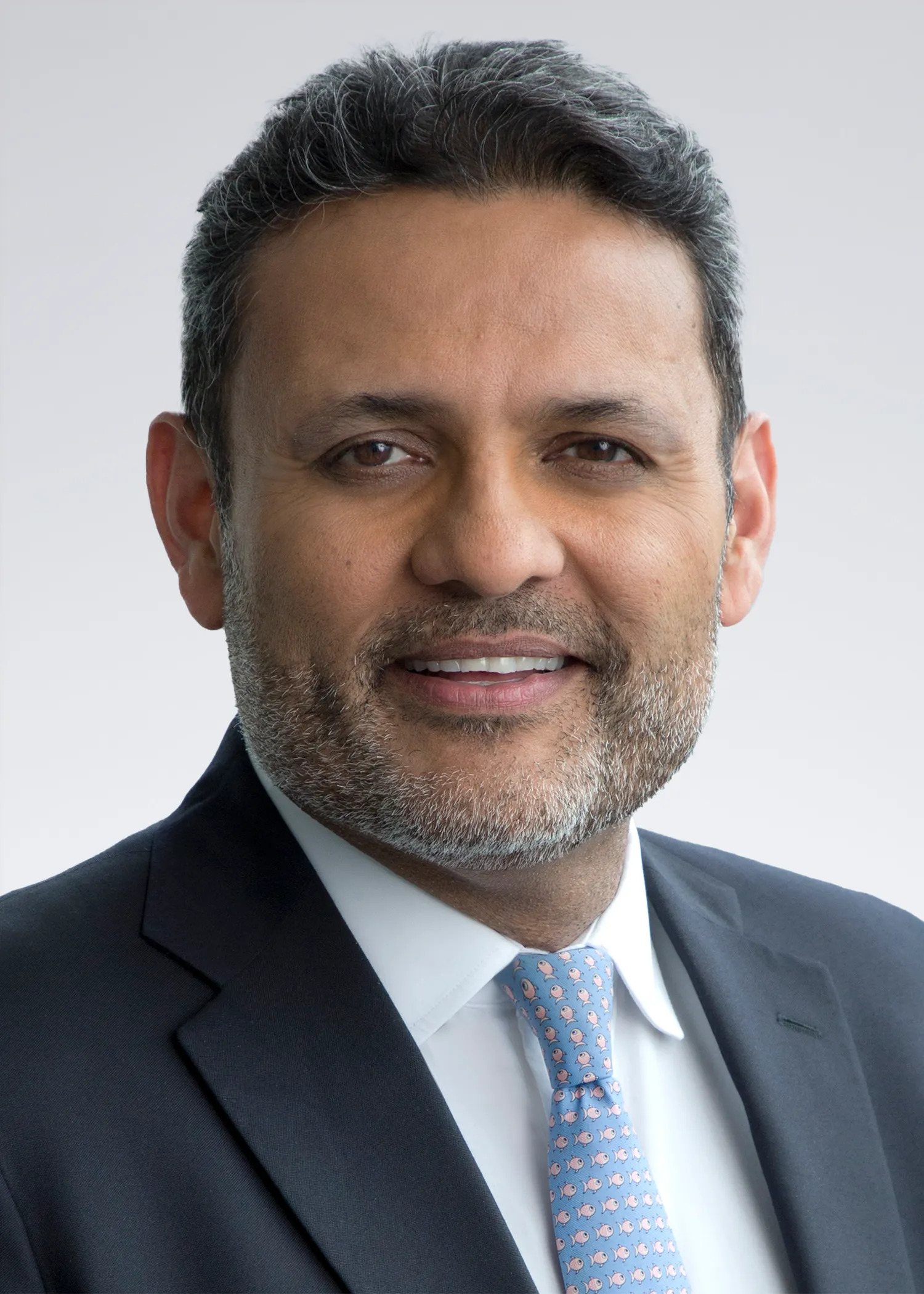Atif Zaim, KPMG’s newly appointed U.S. managing principal and deputy chair, is preparing to take on one of the firm’s most visible leadership roles.
Zaim, who has been with the company for over 30 years, sat down with CFO.com shortly after the start of his five-year term to share how the advisory business has evolved, what clients expect from firm leaders today and how his career shaped his approach to leading in the rapidly changing marketplace of public accounting. As he steps into this new role, he is still laser-focused on helping partners and clients while now tasked with leading KPMG’s operations.
In the first of a two-part series, Zaim explains how professional services firms are balancing growth ambitions with talent pressures, private equity’s growing impact on services at the firm and KPMG’s approach to technology implementation.
Atif Zaim

Deputy chair and U.S. managing principal, KPMG
Notable previous positions:
- U.S. consulting leader, KPMG
- National managing principal, advisory, KPMG
- Principal, management consulting, customer and operations service line leader, KPMG
This interview has been edited for brevity and clarity.
ADAM ZAKI: You’ve been in leadership at KPMG for a long time, but this is a step up in responsibility. How different do you expect your day-to-day to be now that you’re moving from leading consulting to helping lead the entire firm?
ATIF ZAIM: The day-to-day is going to change in a very significant way. The scope of responsibilities shifts quite a bit. At the highest level, the role requires being in front of clients, managing internal stakeholders, setting priorities and strategy and motivating the team — so those things I have done and will continue to do. At that level, it stays the same.
But when considering my scope — from the consulting business to the entirety of the firm — it’s a very different picture. Moving from one revenue-producing division in advisory to building relationships across the full firm, including audit and tax. Many of those partners I already know and have worked with for decades, but the nature of those relationships will change. There are also the operations of the firm, which weren’t previously part of the scope.
Then, setting strategy at a business unit level versus setting it at the firm level, that’s a different goal and new for me. The audience is much larger, and the way to reach that audience must evolve. Each step I’ve taken over my career was part of a natural progression — expanding the audience and evolving how to engage them.
Are you building technology in-house or leaning more on partnerships? EY, for example, says they’ve built the largest in-house LLM in the world — are you taking a similar route?
Yes, we have a lot of in-house development we do on our platforms. And yes, we partner with technology providers significantly. It’s a mix, and it’ll stay that way. There’s no reason to swing to one side.
There are certain things where I don’t know if you really gain a competitive advantage by building something someone else already created. There are lots of credible solutions on the market that are made by companies that specialize in that product or service. This is one of those things where we have the same conversation internally as we do with our clients.
There wasn’t always a credible alternative. In some cases, based on your industry or your unique situation, you need to build it yourself. But in others, like a video conferencing platform, for example, why would you build it? That’s not your core. You can license it at a reasonable cost and focus your effort on what matters.
It’s the same for us. There are areas where there isn’t a platform on the market that functions the way we want, so we’re going to build that internally. But for the core technologies that feed into that platform, we’ll use what’s available and partner with tech firms. We’ve never felt we must invent everything to feel like we’re innovating. If we must, we will. But it’s about being intentional, not reinventing the wheel just because we can.
What changes would you like to make for the remainder of the year? Operational changes, strategic direction — is there something you step in and say, “This is the first change I want to make.”
The biggest and most obvious priority is selecting the right team. Alongside [CEO Tim Walsh], we’ve focused on cementing our leadership group. We’re very excited. The core management committee — a group of 10 — has already been announced.
That’s one of the major shifts we’re making. As part of that, we’ve reorganized certain areas to help us execute more effectively. One of the early but important changes is moving toward a more industry-focused structure. The goal is to ensure clients experience audit, tax and advisory as an integrated offering tailored to their industry.
We’ve also made organizational adjustments to improve agility and responsiveness. That includes efforts to streamline processes and remove friction that slows down execution. Engaging with partners remains essential. Tim and I have traveled across the country and met with roughly half of our partners in person so far. We’re also building on that with a new internal social platform where both of us are active, alongside many partners, to keep the dialogue going.
Unlike many companies, our shareholders are also our partners — we work with them every day. That makes continuous engagement even more important.
Are you adjusting your service model in response to the uptick in private equity investments across all industries?
Not necessarily in our offerings or services to clients, but I think it’s certainly influencing our mindset, the way we operate, and the manner in which we serve our PE clients. When you look at the economy overall, the shift is clear. The number of publicly listed companies is declining. Meanwhile, the number of privately owned firms, including those backed by private equity, is growing significantly.
It doesn’t necessarily change the types of services we provide. You’re still going to have due diligence, finance transformation, audit, tax, technology, customer — all of it. However, PE’s growing influence is fundamentally reshaping the market, and we’ve been evolving our service model in response. Historically, firms like ours were organized around functional services — audit, tax, advisory — but PE clients need something different: integrated, industry-focused, lifecycle-driven solutions that support value creation from due diligence through exit.
Often, you’re not just dealing with the portfolio company, you’re also working with the fund or the private equity firm that owns it. That’s a different dynamic. You’ve got to think about their hold period, what they care about during that window and what their exit strategy is. In response, we’re shifting to a more connected service model, focused less on traditional lines and more on solving for outcomes across the investment lifecycle. We’re embedding sector specialists, leveraging data and AI more aggressively and training our teams to think like investors, not just advisers.
One of our biggest areas of focus right now is improving operational performance between entry and exit for these types of companies; helping clients manage cash better, drive growth, improve efficiency, optimize pricing and take out costs. Those are the things private equity sponsors care about, and it’s where we can bring value.
We are also enhancing our relationship approach, moving from transactional engagement to becoming strategic partners who anticipate needs, not just respond to them. Ultimately, our goal is to help PE firms move faster, de-risk decisions and unlock value across their portfolios, and that requires a very different way of showing up.
You’ve been with KPMG longer than I’ve been alive. What has kept you around over the years?
Three things come to mind. One of them is people and the relationships you make. We’re all together on our professional journeys. We’re developing together, learning together and serving clients together. The people I’ve worked with, that I’ve been in the trenches with, we’ve forged ties and friendships that are meaningful, powerful and long-lasting.
The other is that with this skill set, there are only a few places where you could have this impact with clients. And this excites me — being in the front of it, being in front of clients and delivering for our clients.
The third thing is that the work is still interesting because it keeps evolving. After governance, risk and compliance, I started getting into business performance improvement work, helping clients run their businesses better. Then, business transformation became my focus. A few years later, we started the consulting business again. More recently, we’ve been leaning into technology and generative AI.
So every few years, the work looks different. The problems have changed, the clients have changed and the tools have changed. This is what has kept me engaged. I never felt like I was doing the same thing over and over. That’s probably why I’ve stayed as long as I have; I’ve never been bored.
This is part one of two-part series. Read part two here.





